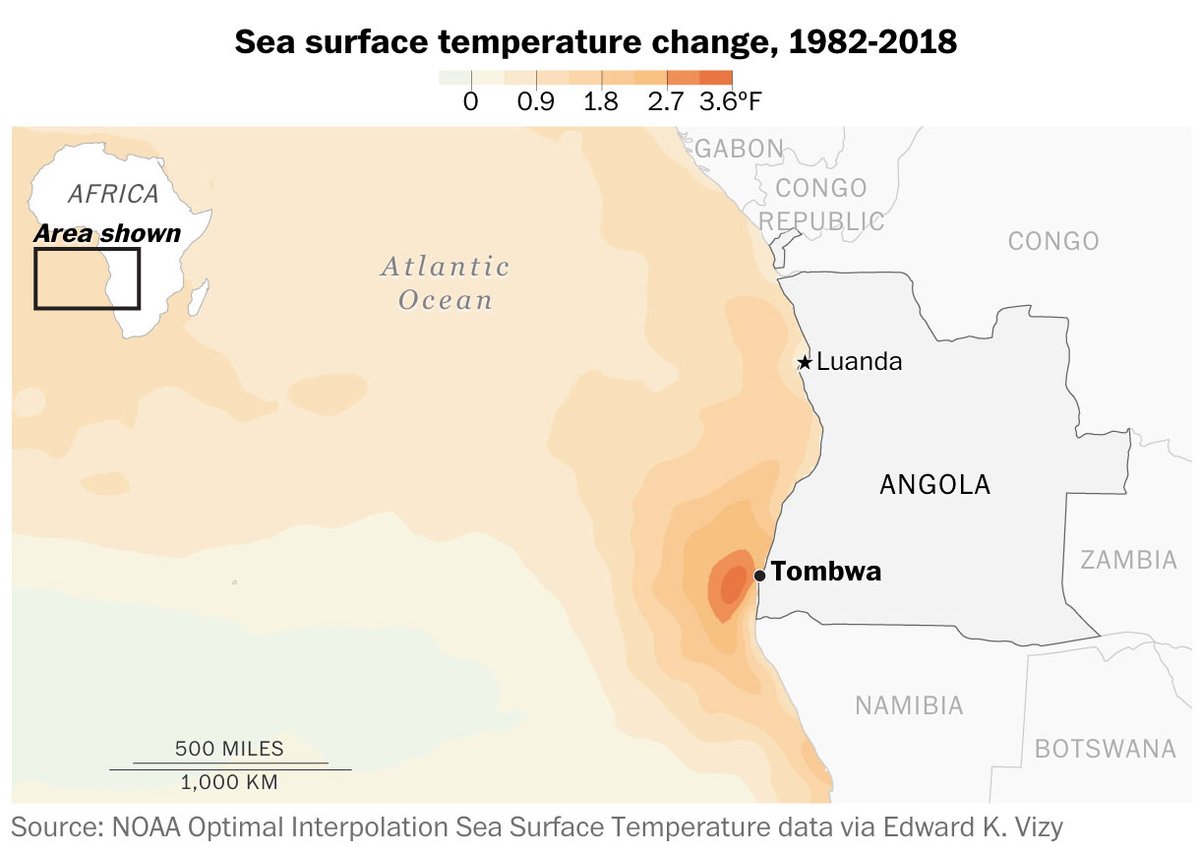
Professor of practice @UVAEnvironment, climate communicator.
6 subscribers
How to get URL link on X (Twitter) App



 2. Here's another chart by @JohnMuyskens showing the regional emissions declines. The peak decline of about 17 percent would have been higher if all countries had locked down at the same time. But China, the biggest emitter, of course shut down first.
2. Here's another chart by @JohnMuyskens showing the regional emissions declines. The peak decline of about 17 percent would have been higher if all countries had locked down at the same time. But China, the biggest emitter, of course shut down first. 
https://twitter.com/chriscmooney/status/12435997507143188492. Yet several countries, like Germany and South Korea, have tested half a percent or more of their populations. And Norway has tested 1.5 percent of its country already! fhi.no/en/id/infectio…
https://twitter.com/chriscmooney/status/12360266336787374082. If recent trends continue -- with emissions in China down by a quarter in recent weeks, and oil markets and air travel showing disruption around the world -- the novel coronavirus could join this group. But it's very early to say for sure.

https://twitter.com/chriscmooney/status/12301656252149923852. It sounds like scientists just doing what scientists do -- drilling into Greenland ice, withdrawing samples of ancient air from ancient ice...typical.
https://twitter.com/chriscmooney/status/12232726112175964162. On the one hand, as @afreedma and I reported, there’s a growing argument that the worst case climate scenario used in so many modeling studies is too…worst. washingtonpost.com/weather/2020/0…

https://twitter.com/chriscmooney/status/12105499057789911042. @bydarrylfears and @bonjomo traveled to Australia – and then, from there, to its southern island of Tasmania – to investigate a devastating ocean warming hotspot that has formed.

 2. In the ninth installment of the “2C: Beyond the Limit” series, @eilperin and @bonjomo take us to the North Slope of Alaska, which is experiencing one of the fastest warming rates on Earth.
2. In the ninth installment of the “2C: Beyond the Limit” series, @eilperin and @bonjomo take us to the North Slope of Alaska, which is experiencing one of the fastest warming rates on Earth.

https://twitter.com/chriscmooney/status/12029681929829621762. Santa Barbara is one of a cluster of counties in Southern California that showed up as having outsized warming from 1895-2018 when we looked at @NOAA’s county level data. The others are Ventura, Los Angeles, Orange, and to a somewhat lesser extent, San Diego.

https://twitter.com/washingtonpost/status/11997573846478725132. Basically the video is explaining this -- the concentrated ocean hotspot off the coast of southern Angola.


 2. Meet Tombwa, Angola, built on fishing. It sits onshore of a crucial oceanic juncture where the Benguela Current, traveling up from southern waters along Africa’s southwest coast, has traditionally delivered nutrient rich, cool waters through a process called upwelling.
2. Meet Tombwa, Angola, built on fishing. It sits onshore of a crucial oceanic juncture where the Benguela Current, traveling up from southern waters along Africa’s southwest coast, has traditionally delivered nutrient rich, cool waters through a process called upwelling. 
https://twitter.com/chriscmooney/status/11992889384285429762. How do I put this...that's pretty hard to imagine.

https://twitter.com/chriscmooney/status/11942714734243881022. This story is by @simondenyer, who runs the Post’s Tokyo bureau, with photos by @salwangeorges. Both traveled to Hokkaido, Japan’s most northern island, for this tale of salmon, ice, and frightening changes in the most dynamic sea ice system on Earth.

https://twitter.com/chriscmooney/status/11898970363694530562. They’ve seen 2.3 degrees C of warming and even more than that